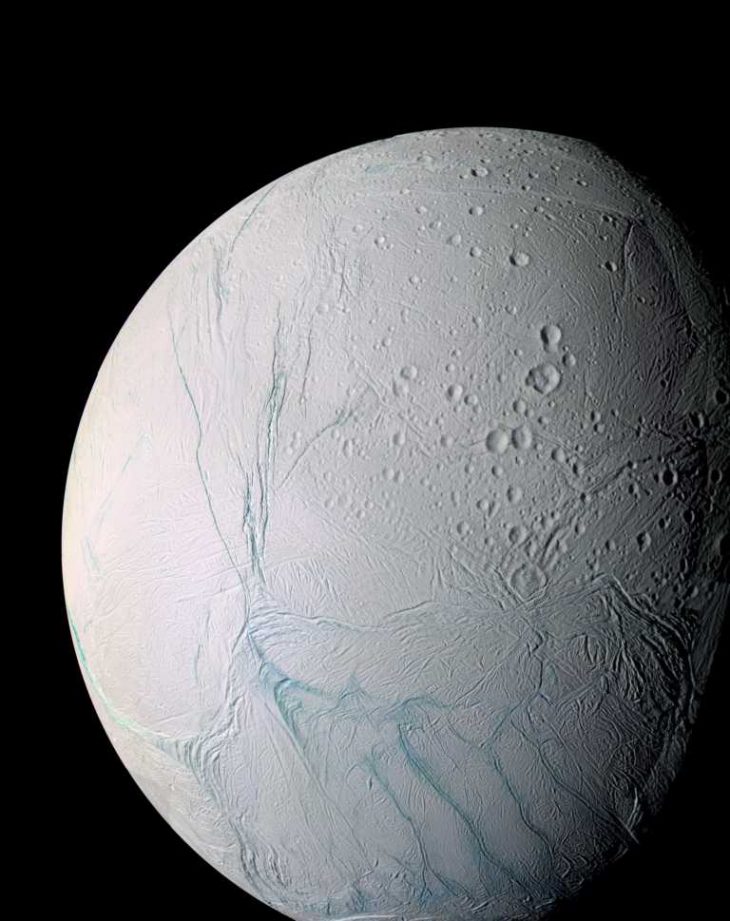In a series of tantalizingly close flybys to one of Saturn‘s Moons, named “Enceladus,” NASA’s Cassini spacecraft has revealed watery jets erupting from what may be a vast underground sea.
These jets, which spew through cracks in the moon’s icy shell, could lead back to a habitable zone that is uniquely accessible in all the solar system. Photo below shows dramatic plumes, both large and small, spraying water ice from many locations near the south pole of Saturn’s moon Enceladus. More than 30 individual jets of different sizes can be seen in this image captured during a flyby of NASA’s Cassini spacecraft.
Thermal measurements of Enceladus’s fissures have revealed temperatures as high as -120 deg Fahrenheit (190 Kelvin). That adds all the heat up to 16 gigawatts of thermal energy that are coming out of those cracks. Now that the orbit’s eccentricity has lessened, the heat emanating from the interior is a combination of heat produced today and in the past. But since more heat is coming out presently than is being produced, Enceladus is in a cooling off stage and the liquid water is returning to ice.


